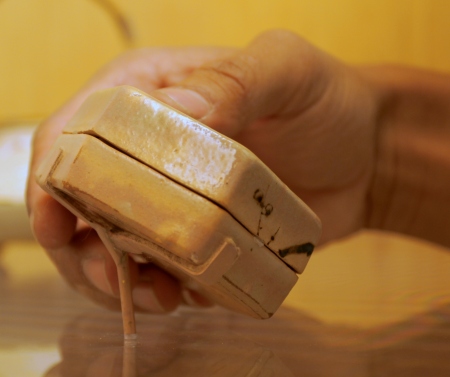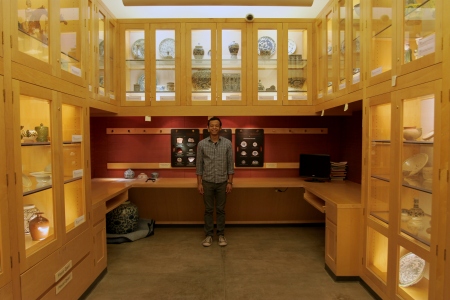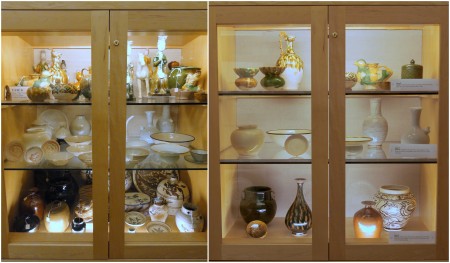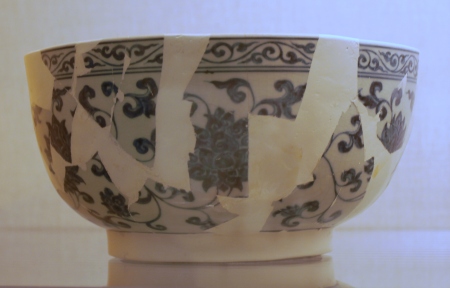This Friday, May 17, we’ll reopen our newly reinstalled Snukal Ceramics Study Gallery. It’s been behind closed doors for 2 1/2 months as our curatorial and collections team has removed many ceramic pieces in the gallery and reinstalled key examples from different regions and time periods. This reinstallation had several goals: first and most importantly, to upgrade the cases and object mounts to better protect the objects from earthquakes; to reduce the number of objects in each case so that visitors can better enjoy each individual work; and to rearrange the flow of the cases to tell a comprehensive story of ceramic production in Asia.
 “Before, the objects were not anchored in custom mounts in most cases,” said Cesar, our Collections Management Assistant. “It was a concern for us that a strong earthquake would put many objects at risk.” As part of an overall initiative to prevent objects both on view and in storage from damage from earthquakes (which was generously funded by the Institute of Museum and Library Services ), the curatorial and collections departments worked with mount makers and an objects conservator to design and build custom mounts and supports for each individual object and anchored them into new plexiglass shelves.
“Before, the objects were not anchored in custom mounts in most cases,” said Cesar, our Collections Management Assistant. “It was a concern for us that a strong earthquake would put many objects at risk.” As part of an overall initiative to prevent objects both on view and in storage from damage from earthquakes (which was generously funded by the Institute of Museum and Library Services ), the curatorial and collections departments worked with mount makers and an objects conservator to design and build custom mounts and supports for each individual object and anchored them into new plexiglass shelves.
The reinstallation also involved rethinking the entire layout of the gallery cases. “By putting the objects in chronological order, grouped by country, we’re able to show the progression of ceramic technology and techniques through a careful selection of a smaller number of objects,” Cesar said. In the “after” case above, the colored glazes are in contrast to the unglazed ceramics in the earlier chronological cases. These objects represent improvements in the understanding of glazing and firing techniques that resulted in a finer monochromes and multi-colored surfaces. The pigments on these ceramics are more vibrant and better preserved than the earlier painted pieces, where the surfaces are more fragile.
The final case in the gallery demonstrates different conservation techniques and raw materials involved in making and glazing ceramics. “Because of the delicate nature of ceramics and the age of many of these objects, some of them were added to the museum collection despite having had previous repairs. All these objects have been repaired in one way or another,” Cesar said. “You can see different approaches to repairs that have been used – sometimes the repairs are left to be clearly evident, at other times additional steps are taken to blur the repair or integrate it into the work. In some instances, modern pigments were used by early generations of conservators in painting the repaired area to match the undamaged areas but have faded or changed color over time, highlighting the areas that were repaired. Conservators working today strive to use pigments and materials that meet stringent standards for lightfastness and other concerns so that the repairs will stand the relative test of time.”
Come see the newly reinstalled Snukal Gallery for yourself, and enjoy the new progression of objects. What trends and changes do you observe as you move through the cases? ~CM





